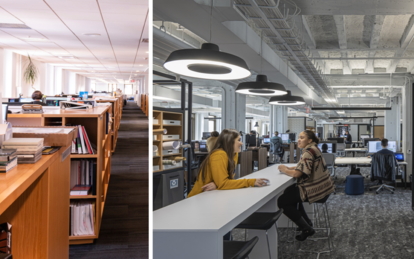Zombie Offices: Bringing the Office Back From the Dead

During the pandemic, most offices sat empty, resembling haunted houses. With return-to-office mandates and varied hybrid work models being implemented, have we considered what form of abandoned offices we are returning to? During this time of the year, jack-o-lanterns, princesses, zombies and spooky stories about spirits occupying haunted houses are all around us. Now that employees have returned to the office, how are we ensuring that our workplaces don't become haunted houses visited only for random events or on scheduled days?
For some, there is a belief that physical office space holds minimal significance in terms of enticing people to spend time in the office. This may have been true when regular office attendance was required. However, the paradigm has shifted, and work for most individuals -- particularly those in knowledge-based roles -- can now be conducted from almost any location. Consequently, the office is no longer merely a place for completing tasks. It has assumed new roles, such as facilitating social interaction, promoting collaboration, building community and culture and providing employees with amenities that help to balance work and life.
Phrases like ‘office competing with home environments’ or ‘needing to earn the commute’ highlight the challenge associated with returning to traditional office spaces characterized by uninspiring cubicles and outdated conference rooms. The significance of space is undeniable. While it cannot independently transform people, work or culture, it plays a crucial role in enabling and inhibiting change. The isolation experienced when working alone among sterile cubicles, the technological frustrations during hybrid meetings, and the distractions from colleagues' back-to-back calls within an open office setting underscore the pressing need for reimagined office environments.
Transforming our workplaces from the likes of a haunted house is essential, not optional. Envision an environment that offers diverse options for solo and teamwork, intuitive technology and connectivity, and flexibility to meet individual and team needs while enhancing physical and psychological wellbeing. An office environment should embody an organization's brand and culture and foster engagement and connections. Instead of superficial fixes, the space should be designed with a holistic user experience and intended activities in mind.
In conjunction with the physical transformation required for an optimized space conducive to effective hybrid work, there is a necessity to imbue the space with a new sense of purpose. Recent discussions concerning the office's value present an opportunity to critically reevaluate its concept. The office, as previously understood, has undergone a metamorphosis. Revitalizing it necessitates instilling it with new purpose and vitality beyond mere renovation. Drawing an analogy between a house and a home, a house only transforms into a home once it is inhabited and instilled with new meaning, purpose and life. The same principle applies to the office.
The question is, are you working in a haunted house or a place you can call home?